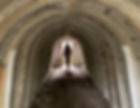The Hidden Gems of Underground Bunkers: Uncovering Their Surprising Artistic Side
4 min readA guest post by Jackie Edwards, a historical tour guide
Underneath the streets of the United Kingdom lies a network of tunnels leading to secret bunkers that sheltered people during the war. Recent data indicates that there are 258 bunkers spread out across the country, but more are being discovered as the years go by. For instance, in October 2023, an underground bunker was uncovered by developers who were clearing a site near Portreath in Cornwall. The bunker was reportedly used by personnel working near the Portreath airfield during and after World War II.

Whilst most of the discovered bunkers had only dirt, broken bottles, and debris, other bunkers bore the signs of their former inhabitants as some people left their artistic stamp in these hidden places. Delve into the lesser-known artistic elements found within these bunkers, highlighting the creative expressions of the individuals who once occupied these spaces. From graffiti murals depicting life during wartimes to handcrafted sculptures made from spare military equipment, these artistic traces offer a unique perspective on the human experience within the bunkers. We would explore how these artworks reflect the resilience, camaraderie, and even humor of those who sought refuge underground.
Graffiti as a Demand for Justice
Some underground bunkers have become popular tourist spots as visitors can explore these hidden places with the help of an experienced guide. They have also become part of popular culture since some became iconic filming sites in the UK. One of these bunkers was featured in Stephen Poliakoff’s “Hidden City,” a film which focuses on lost government secrets hidden in a bomb shelter under Tottenham Court Road.
As more people became aware of these underground shelters, more evidence of what took place inside these bunkers have come to light. We’ve also gotten faint glimpses of what kind of people sought refuge in these hidden spaces. While we can only imagine how grim things were at the height of World War II, it’s reassuring to know that some people found a way to cope by turning to art during these dark times in history.
In March 2012, a graffiti possibly depicting Adolf Hitler was found at the Basil Hill Barracks in the underground tunnels of Corsham, Wiltshire. It’s likely that no drawing materials, such as a pencil or a chunk of coal, was available to the graffiti creator at that time as the wall art appears to have been made by scratching the wall with a sharp object.
Though there was no writing on the wall to confirm the identity of the person shown in the grafitti, experts concluded that there’s a strong possibility that it’s the former dictator since the etching bears his trademark toothbrush-style moustache. Rather than being a tribute to Hitler, the graffiti is interpreted as a demand for justice for his crimes to mankind. Now, it serves as a reminder of how one’s arbitrary use of power can cause a lot of pain, and why we should all stay vigilant so history doesn’t repeat itself.
Humorous Doodles on Bunker Walls
Some bunkers used to shelter hundreds of children from German bomb raids during the second World War. One such underground shelter is in Bristol, and upon its discovery in 2018, it was found that the walls are covered in various doodles made by its young inhabitants. Some of the artworks depict ordinary life, such as a drawing of a lady standing in front of a house. There’s also a drawing of a soldier parachuting, and a lady wearing a ball gown.
One of the children appears to be a favorite subject as there are drawings of a certain Betty Clease going shopping, while another wall etching shows her holding hands with a boy named Ken. Apart from drawing, the children also kept themselves occupied by playing games of hangman and noughts and crosses on the walls. But perhaps, one of the best pieces in the Bristol bunker is a simple yet quirky poem. Written in cursive, part of the poem reads, “The cat sat on the mat, and ate some bats.” The games played, as well as the doodles and words scribbled on these walls show us that life went on for these children, even during the worst of the Blitz.

Glamorous Coal Portraits in a Bomb Shelter
Upon entering a secret wartime bunker, most people would expect to find rubble, cobwebs, and perhaps some broken, rusted, or weathered household items, at the very least. But what if you found beautifully rendered portraits of well-dressed people on the walls? That’s what Chris Halliwell from Rochdale, Greater Manchester found upon exploring a hidden bunker. Halliwell, who refused to share the location of the bunker to prevent vandals from defacing the drawings, said that he only heard stories about the wartime artworks’ existence before seeing them for himself.
Once he entered the tunnels, Halliwell was surprised to see charcoal portraits of ladies sporting 1940s pin curls, and drawings of soldiers wearing their uniform and metal hats. The father-of-four believes that the drawings were created by workers from a nearby coal factory who used the bunker as shelter during the bomb attacks. “It might have been a way for the people to keep themselves occupied during the tedious wait for the all clear,” Halliwell said. The gorgeous portraits are a tribute to 1940’s style and fashion, and they serve as silent witnesses to the coal workers’ trials during the war.
The places underneath the streets where we walk on contain a lot of secrets and revelations from World War II. The presence of art in these underground bunkers symbolise the tenacity and the will to live of their former inhabitants as they hope for justice and peace, one doodle or graffiti at a time.


